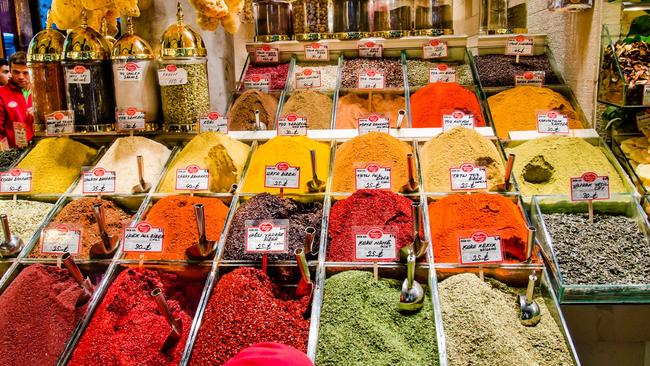Brookings Institution’s India expert, Tanvi Madan says firms should move quickly on trade deal
Companies should move quickly to take advantage of a new trade deal with India that will reduce tariffs on a range of goods.

Companies should move quickly to take advantage of a new trade deal with India and put aside past perceptions of the country as a difficult place to do business, according to the Brookings Institution’s India expert, Tanvi Madan.
In an interview with The Australian ahead of the Quadrilateral Security Dialogue on Tuesday, Dr Madan, director of The India Project at the Brookings think tank in Washington DC, said the strong political momentum in the Australia-India relationship created an opportunity for Australian companies in the market with the new trade deal that will reduce tariffs on a range of goods.
Signed in April, the Australia India Economic Co-operation and Trade Agreement (AI ECTA) is India’s first trade deal with a developed economy in a decade and only its second trade deal in 11 years.
“Australian business needs to take advantage of the lead time it has before India signs trade agreements with other countries and groupings such as the European Union,” Dr Madan said after a private round table with the Asia Society in Sydney.
“There are potential opportunities in India as it looks to diversify its sources of supply, particularly in areas like critical minerals and agricultural goods such as wine.”
India is negotiating trade deals with the UK, Canada, Israel, and the EU.
Dr Madan said the trade deal signed last month provided Australian wine makers with a window of opportunity to expand into the India market ahead of French wine makers, who needed to await a trade deal between the EU and India to have similar tariffs.
Australian wine makers are now reviewing the India trade deal for market opportunities, having been all but shut out of the Chinese market following the imposition of tariffs of more than 200 per cent n some companies in March last year.
At its peak in 2019, the Chinese market for Australian wines was worth more than $1.2bn. But the Indian market today is a fraction of that, worth $12m a year in 2021.
The new agreement with India will result in the current tariffs on Australia wine being reduced from 150 per cent to 100 per cent, phasing down to 50 per cent after the agreement has been in place for more than 10 years.
Two-way trade in goods and services between Australia and India has grown in value from $13.6bn in 2007 to $24.3bn in 2020 – but it pales into insignificance compared to the $200bn two-way trade with China despite increasing political tensions.
While India has often been touted as the next big market for Australian companies, given its large population and its common heritage of language, a shared colonial past and an apparently similar legal system, Australian companies have had a chequered history in the country.
But Dr Patel said India was changing from its past protectionist attitudes and was also realising the importance of diversifying away from its economic dependence on China.
She said Australian companies should also look to take advantage of new policies announced in India under its production-linked incentive scheme announced in 2020, which aims to encourage investment in India in 13 different areas including carmaking, pharmaceuticals, white goods electronics, solar panels and food production.
She said India had created special incentives for companies to invest in these sectors as part of its strategy of diversifying away from its dependence on supplies from China as political ties between India and China have worsened.
Dr Madan said the new trade deal showed the momentum of strengthening political ties between Australia and India in recent years that was creating potential business opportunities for Australian companies.
The trade deal with Australia was one of the fastest done by India with any country. “It was one of the fastest trade agreements that India has ever signed because there was (political) momentum behind it,” she said. “My hope is that this momentum continues and that governments take actions which enable a better business environment.”
But she admitted India needed to change its attitude to foreign companies and foreign investors.
“There are still areas where tariffs could be lower and the enabling environment for business could be better,” she said.
India needed to send a message that “there was now going to be a level playing field” for Indian and foreign companies in its market and that the government did not have its “thumb on the scales” in favour of Indian companies.
She admitted that India’s reputation as a destination for foreign investment had been harmed by companies that had a bad experience in the market in the past.
“It’s not just with Australia – companies from other countries as well have gone (to India) and had a bad experience and never want to go back,” she said. “India will have to convince other countries that there is a change in the environment because otherwise they will continue to see it as a difficult place to do business.”
She said India needed to try harder to attract foreign capital into its manufacturing sector at a time when other countries in Asia, such as Vietnam and Bangladesh, were attracting large amounts of foreign investment.
“These are much smaller actors but, in terms of being part of the supply chain, foreign companies can find them more attractive (as they are also involved in regional trade deals),” she said.
Natasha Jha Bhaskar, the general manager of Australian-India business advisory group Newland Global, said the new trade deal with India “brings Australia to the inner circle of India’s economic diplomacy, which otherwise has been overlooked because of Australia’s population size and scale, offering Australia a first-mover advantage across various sectors in a large growing aspirational economy”.
She said India needed goods and services in agriculture, critical minerals, education and skills training, and healthcare.
“India’s scale, demographics, and growing middle class offer a new long-term growth opportunity for Australian businesses,” she said. “Australian manufacturers can use India as a cost-effective manufacturing base, and export from India to the world.”
She said the trade deal was “indicative of how Australia’s bilateral relationship with India has grown in leaps and bounds”.
“It offers an opportunity to Australian corporates to be aware and informed of the strides that India is making with its structural and economic reforms across diverse sectors,” she said.
Ms Jha Bhaskar said there was a rising number of foreign firms operating in India, including more than 2000 US companies, more than 1600 German companies and more than 600 Indo-German joint ventures. As well, there were more than 1300 Japanese firms and more than 600 UK firms.
She said India was “transitioning from being a factory to emerging as a marketplace for the world” and now had “Western suitors knocking on its doors”.
She said India’s trade Minister Piyush Goyal, who made a three-day visit to Australia last month, raised the example of Australian bionic ear company Cochlear which has sold 27,000 of its implants in India in the past eleven years.
He said Cochlear could scale up its operations by setting up a manufacturing facility in India, which would not only reduce their cost and increase sales in the Indian market, but also provide export opportunities from India to other countries.
Ms Jha Bhaskar said the Australia India trade deal was estimated to boost bilateral trade between the two countries to $45bn a year in the next five years and $100bn a year by 2030.
“To ride this India wave, it is essential to make Australian engagement with India a national project and assist businesses in understanding the political and public policy contexts that they operate in,” she said.
She said it was important for Australian companies looking at the Indian market to be aware of sector-specific regulations and national and state development plans and priorities.



